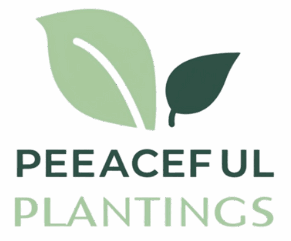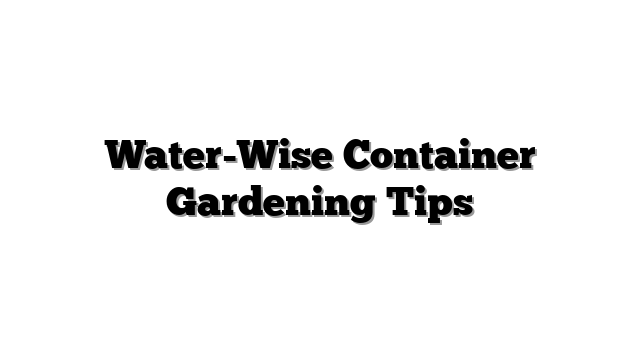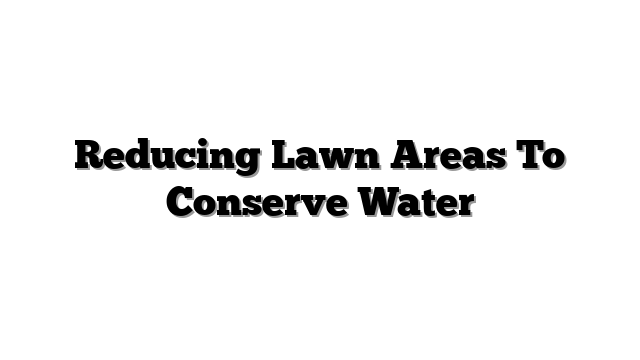Soil Improvement For Better Water Holding
Your garden plants look sad. They wilt fast in summer heat. You water them. Water runs right off dry soil. Or maybe it just sits there. This wastes water. It wastes your time. It costs you money. Plants get stressed. Poor soil structure causes this.
Many garden soils have problems. Heavy clay soil holds too much water. Fast-draining sand holds too little. Neither soil type manages water well.
Soil improvement for better water holding is the answer. It fixes these issues. Good soil makes plants healthy. Plants become strong. It helps you garden better. It saves water.
This guide will help you. We will look at your soil. We will find problems. We will show you ways to fix soil. Learn how to make soil hold water. Make your garden thrive. We cover soil types. We talk about helpful materials. You will learn how to improve soil for better water holding. Beginners can do this. It helps plant health. It builds soil health.
Soil structure matters. It helps soil hold water. It helps plant roots grow. What is soil structure? Soil particles stick together. They form clumps. Think of building blocks. Soil texture is different. That is sand, silt, and clay. Think of ingredients. Good structure means particles form good clumps.
Structure affects water. Good structure has spaces. Some spaces are big. Air and water drain through them. Some spaces are small. They hold water. This water feeds plants. Bad structure has few spaces. Water runs off. Or soil stays too wet.
Water moves through soil. Good structure lets water enter fast. This stops water runoff. Water moves down well. Poor structure slows water entry. Water sits on top.
Soil holds water like a sponge. Organic matter helps soil clumps form. These clumps hold water. They hold water plants can use. Soil does not get waterlogged.
Roots need good soil. Good structure lets roots push through. They find water. They find food. Hard soil stops roots. Wet soil drowns roots.
Good structure does more. Air gets to roots. Plants get food better. Good soil has helpful bugs. These bugs keep soil healthy. All these things help plant health.
Bad soil costs you. Water is wasted. Plant food washes away. Plants get sick easier. Plants do not grow big. This hurts the earth too. Good soil is better for everyone.
Know your soil type. This is the first step. Different soils need different help. Guessing does not work well. It can hurt your garden.
Try simple soil tests. You can do them at home.
Do the squeeze test. Take some soil. Make it wet. Squeeze it in your hand. Does it fall apart? That is sandy soil. Does it make a ball? Does it feel gritty? That is loamy soil. Does it make a ribbon? Can you push it out like tape? That is clay soil. This test shows soil texture.
Try the jar test. Get a clear jar. Put soil in it. Fill it with water. Shake it well. Let it sit for a day. Sand settles fast at the bottom. Silt is next. Clay stays on top. Organic matter floats. See the layers. This shows soil parts.
Do a drainage test. Dig a hole. Make it about one foot deep. Fill it with water. Let it drain away. Fill it again. How fast does water drain the second time? Fast draining means sandy soil. Slow draining means clay soil. Water sitting there means bad drainage.
Watch your soil. Does water run off when you water? Does it make puddles? Does it dry hard like a brick? Does it feel sticky when wet? Does it feel loose and gritty? Do you see earthworms? Worms mean healthy soil. Is there a hard layer under the top soil? This is compacted soil.
Labs can test soil too. They check food levels. They check soil pH. This helps you understand your soil more.
Understand your test results. Sandy soil needs help holding water. Clay soil needs help with water moving. It needs air space too. Soil health starts with knowing what you have. These gardening tips help beginners.
Organic matter is key. It fixes soil structure. It helps soil hold water. It works for all soil types. Organic matter comes from plants. It comes from animals. It is broken down material.
Organic matter helps soil hold water. It works like a sponge. It holds water inside itself. It acts like glue too. Tiny living things help. They make soil particles stick. They form soil clumps. These clumps create spaces. Water stays in small spaces. Air stays in big spaces.
Clumps help water enter. Water goes into soil faster. Less water runs away. Water in clumps is good. Plant roots can easily use it. Water on clay particles is harder to get. Organic matter evens things out. Soil moisture changes less.
You can get organic matter. Compost is best. It is fully broken down. Compost helps soil a lot. You can make it. You can buy it. Compost for gardens is great.
Use old manure. Make sure it is well-rotted. Fresh manure can burn plants. It can have bad things.
Grow cover crops. These are special plants. Clover, vetch, or rye work well. Grow them. Then mix them into the soil. They add organic matter. This is a 2025 gardening trend. It makes soil healthier.
Use leaf mold. This is just old leaves. Let them break down. They make good soil conditioner.
Other things help. Grass clippings work. Shredded leaves work. Wood chips work. Be careful with fresh wood chips. They can use up nitrogen. Use composted wood chips.
How to add organic matter? You can dig it in. This helps at first. Too much digging hurts soil structure later.
Add it to the top. Spread compost on top of soil. Worms and rain pull it down. This is better for long-term health. You can layer materials. This is called sheet mulching.
How much to add? Aim for 3 to 5 percent organic matter. Add a few inches of compost each year. This improves soil conditioning. It helps sustainable gardening.
Other things help soil. They help hold water. They stop water loss. They work with organic matter.
Use mulch. Put a layer on top of soil. Mulch keeps soil moist. It stops water from drying up. It keeps soil temperature steady. It stops weeds from growing. Weeds steal water. Mulching benefits your garden.
What mulch to use? Wood chips are good. Straw works. Shredded bark works. Compost works. These are organic mulches. They add to soil as they break down. Gravel is inorganic mulch. Plastic sheeting is too. Organic mulches are better. They add organic matter over time.
How thick should mulch be? Put 2 to 4 inches down. Keep it away from plant stems.
Stop soil from getting hard. Foot traffic makes soil hard. Heavy machines make it hard. Working wet soil makes it hard. Hard soil has no spaces. Water cannot get in. Roots cannot grow.
Do not walk on garden beds. Use paths. Use tools to loosen soil. A broadfork works. It loosens soil deep down. It does not flip soil over. Add organic matter. It helps soil stay loose. Grow cover crops. Their roots break up hard soil.
Some things help soil too. Use them only if needed.
Biochar is one. It is like charcoal. It comes from burned plants. It has tiny holes. It holds water and food. It helps sandy soil. It is an advanced material. It is a 2025 gardening trend. It helps soil health. It helps the earth.
Vermiculite and perlite help pots. They make soil airy. They help soil hold water. Use them little in garden beds. They help clay soil drain. They do not hold lots of water in sandy soil. Focus on organic matter for garden beds. These amendments are best for containers.
Water your plants well. Water deeply. Water less often. This makes roots grow deep. Deep roots find more water. This uses improved soil well. Watering helps use water wisely.
Soil types need different help. Clay and sand are common. They cause problems. Improve them for better water holding.
Fix sandy soil. Water runs out fast. It takes food with it. Soil does not hold enough water. Plants get dry.
Add lots of organic matter. This is the main thing. Organic matter acts like a sponge. It holds loose sand particles.
Add compost often. Add old manure. Add leaf mold. Add a lot. Grow cover crops. Mix them into soil. Use thick mulch layers. Consider biochar too. This takes time. Keep adding organic matter.
What not to do? Do not add sand to clay. It makes hard dirt. Do not only use man-made stuff.
Fix clay soil. Clay drains very slowly. It gets too wet easily. It gets hard when dry. Roots cannot grow. Water and air cannot move. Clay holds water. But plants cannot use much of it. Wet clay has no air.
Focus on making soil clumpy. Use organic matter. This helps water move. It helps air get in. It helps soil hold water plants can use.
Add compost. Add old manure. Add coarse organic matter. Old wood chips work. Composted bark works. Add a lot. This makes bigger spaces in clay.
Gypsum can help some clay. Use it if your clay has too much salt. It is not for all clay problems. Avoid working clay when it is wet. It gets hard. Use raised beds if soil is very wet. Use mulch. It stops the top from getting hard. Grow cover crops. Some roots break up clay.
What not to do? Do not add only sand. Do not dig too much. Digging breaks up good soil clumps.
Loamy soil is nice. It has a good mix. It still needs help. Add organic matter regularly. This keeps it healthy.
Better soil helps gardens. Gardens become strong. They need less water. This helps with dry weather. This links to sustainable gardening. It helps with drought-tolerant landscaping. It fits 2025 gardening trends. Gardens can handle change.
Keep soil healthy over time. Soil improvement for better water holding is not a quick fix. It is ongoing work.
Add organic matter every year. Spread compost on top. Add other plant materials. This keeps soil healthy.
Always use mulch. Keep a good layer on soil. This protects it.
Do not disturb soil much. Do not dig deep often. This keeps soil structure good. It keeps helpful bugs working.
Do not walk on beds. Use paths. Fix hard spots quickly. Use tools like a broadfork.
Rotate your crops. Grow cover crops. These add organic matter. They improve soil structure naturally. This builds a healthy garden system.
Water smart. Water deeply. Water less often. This helps roots grow deep. Deep roots use soil water well.
Check your soil. Look at how it feels. See how wet it is. Use the squeeze test again. See if your work helps. Change what you do if needed.
Good soil pays you back. Plants are healthier. Plants are stronger. You water less. You save time. You save money. Fewer bugs bother plants. Plants grow bigger. Your garden is strong. It is good for the earth. This is sustainable gardening. This is water-wise gardening.
Here are answers to questions. People ask them often.
How much organic matter should I add? Start with 2 to 4 inches. Add 1 to 2 inches every year. It depends on your soil. It depends on what you add. You usually cannot add too much finished compost.
How fast will soil get better? Organic matter works slowly. You might see changes this year. Drainage might get better. Soil might hold more water. Big changes take years. Keep adding organic matter.
Will better water holding make soil too wet? Good soil improvement does not do this. Adding organic matter makes soil clumpy. This helps soil hold water. It also helps water drain. It makes space for air. Too much water means bad structure. It might be a hard layer below. Organic matter helps fix this.
What is the best thing to add? Organic matter is best. Compost is the best organic matter. It improves soil structure most. It helps soil hold water. It works for all soils. Other things help. They help less than compost.
Does better soil help with plant food? Yes, it does. Organic matter has plant food. It gives food slowly. It helps soil hold food. Food does not wash away. Good soil structure helps roots get food. This helps plant health. It builds soil health.
You learned about soil. You know organic matter is key. It helps soil hold water well. Mulching helps too. Other ways help. Fix your soil for its type.
This work helps your garden. Plants get healthier. They get stronger. You do not need to water as much. You save time. You save money. Your garden is good for the earth. This is sustainable gardening. This is eco-friendly gardening. It saves water.
Start today. Try one new thing. Add compost to one bed. Put down mulch. See the difference.
Read other articles here. Learn more about gardening.
Share your soil stories. Tell us what worked for you.
Work with your soil. Make your garden strong. Grow plants for the future. This is part of 2025 gardening trends. It is about plants that last. It is about smart use of water.







